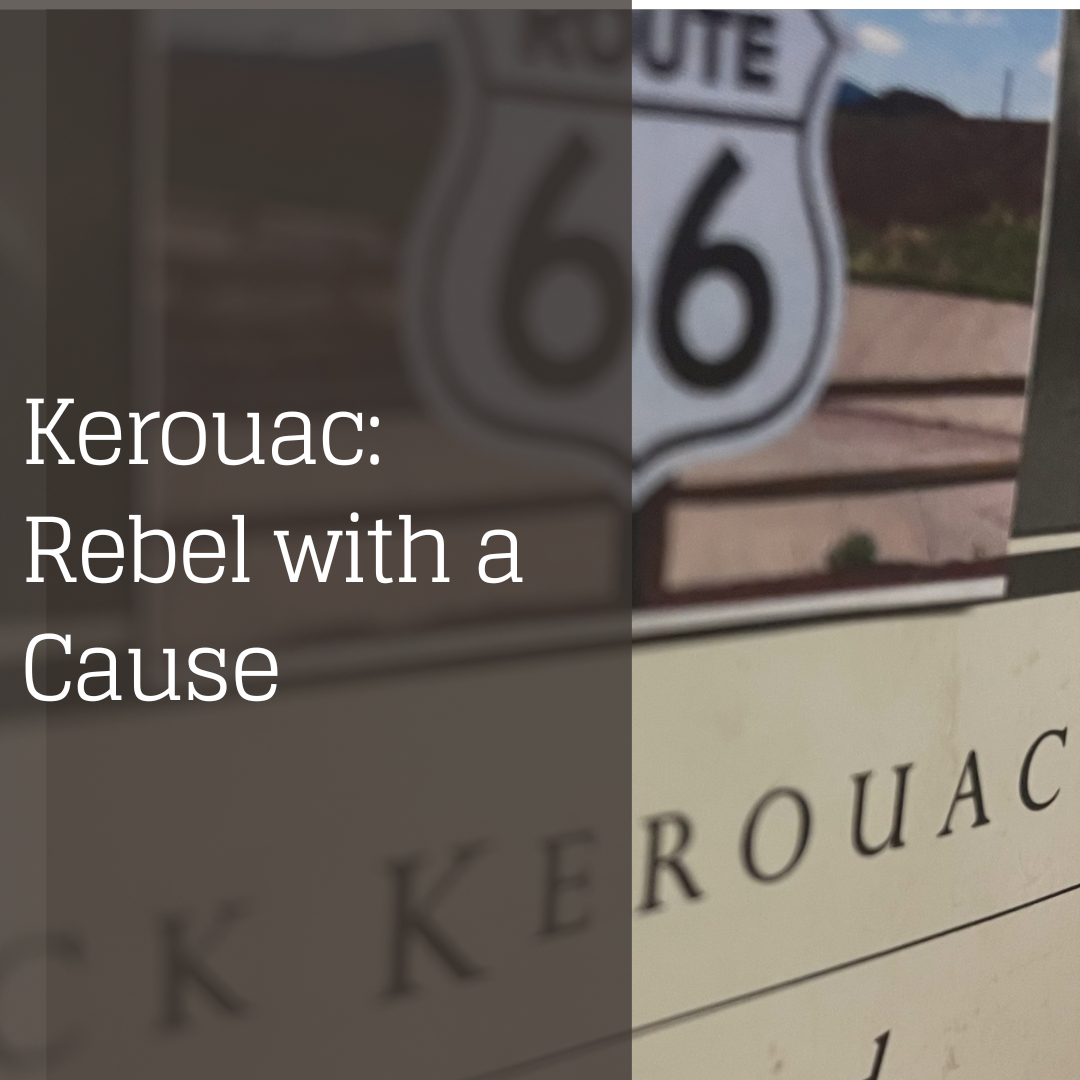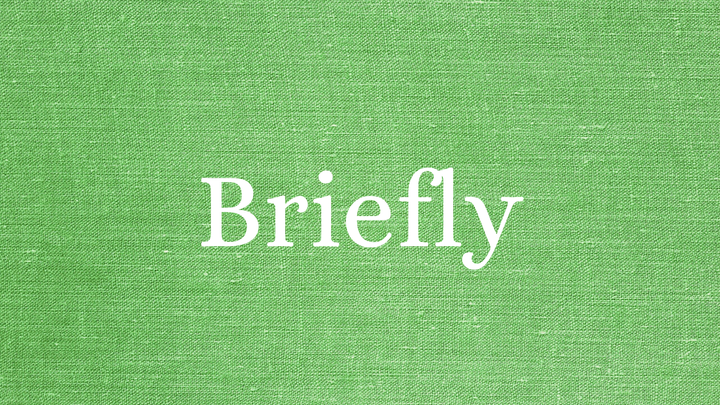Jack Kerouac: The Tao on Steroids
Kerouac rejected The Great Rejection

He sat on his mother’s couch, smoking marijuana and watching the McCarthy hearings, cheering Tail Gunner Joe. He was 32 and it was 1954. In his 20s and the 1940s, he said he’d like to join his Russian comrades and fight against Fascism.
He coined the term “Beat Generation” which became the proto-countercultural movement of the 1960s. He detested the 1960s counterculture, noting that the Beatnik’s was a movement of enthusiasm and glee, not one of disgruntled whining.
He took Benzedrine, morphine, marijuana, hashish, LSD, and opium. He saw a statue of Mary turn its head.
He died at age 47 from hemorrhaging of the esophagus, the drunkard’s classic death. His corpse held a rosary and his funeral Mass was held at St. Jean Baptiste Catholic Church.
Such was the short life of Jack Kerouac.
He was hip before it was hip, crisscrossing America in the late 1940s, from New York to Denver to San Francisco, with stops in Des Moines, Chicago, New Orleans, and points in-between, with a jaunt into Mexico City.
He wrote about it during a Benzedrine-fueled three-week writing session in 1951, typing onto rolls of paper that were taped together into a long scroll so he didn’t have to stop to change the paper. When Truman Capote heard that Kerouac had written the book in three weeks, he sneered, “That’s not writing, that’s typing.”
But youngsters disagreed. They lapped up the book when it was published in 1957 and took to the road, seeking to become Beats.
What was “Beat”
Flannery O’Connor once remarked that there was an unfortunate tendency among readers to focus on all the dead bodies in her fiction, instead of where the real action is: in her characters’ souls.
A similar thing can be said about the Beat lifestyle that Kerouac wrote about. There’s a tendency to focus on the sex, drugs, and bebop (and other “kicks”), instead of where the real action is: the Beats’ souls.
The term “Beat” is short for “Beatific,” as in “Beatific Vision”: the vision of the Divine Being, which Christianity teaches is the final destiny of the redeemed and, though almost exclusively enjoyed in the afterlife, can also be experienced on earth, like Moses may have experienced. Kerouac, never one to blunt his prose or to get bogged down in logical details, applied the abbreviated expression (“Beat”) to life on the road.
The Beats knew (or, more precisely, intuited) that they could experience something greater than the ordinary, mundane life of 1950s America. They intuited there was something more than what units of measurement, money, and rationality could convey.
The Beats were seeking nothing less than the Tao, that area on the other side of Huxley’s doors, the first principle of Zen.
Kerouac sought it especially hard.
It’s his search, not the Benzedrine and other kicks, that fueled On the Road and its enthusiastic greeting among America’s youth.
On the Road to the Tao
On the Road is semi-autobiographical. It’s about Kerouac’s automobile trips across America. His character, Sal Paradise, travels with Dean Moriarity, who is both a “holy goof” and the high priest of the road.
Kerouac habitually sprinkles terms like "soul," "holy," "mystic," and "immortal" throughout the book to describe the experiences of the road, almost like he wanted everyone to be clear that he was writing a religious book.
In their roaming, Sal and Dean thoroughly enjoy everything they encounter. They love the cars, the different airs of our country’s regions, the girls. Many portions of the book are arguably nothing more than a list of things they see and how they “dig” them far more than any ordinary person would dig them.
Sal and Dean’s wanderings are exercises in detachment: trying to rise above an existence confined to living exclusively on this side of the door.
The road detaches them from the binding conventionalities of normal society. As a result, they are able to enjoy everything and everyone, even the most disgusting, because they are able, in their unique way, to see goodness in everything.
At one point, they pick up an “incredibly filthy” hitchhiker at Dean’s insistence. The man is covered with scabs and is reading a muddy paperback he found in a culvert. They sit close to him and dig him the whole time, genuinely getting a kick out of talking to him, but without any hint of malice. They really like the guy and are totally absorbed by him. After dropping him off, Dean excitedly says about picking up the hitchhiker: “I told you it was kicks. Everybody’s kicks, man!”[i]
On the Road also features holy men: willing outcasts of society. There’s the “wild, ecstatic” Rollo Greb, the Beat-saint Dean wanted to imitate, a man who “didn’t give a damn about anything,” a “great scholar who goes reeling down the New York waterfront with original seventeenth-century musical manuscripts under his arm, shouting,” whose “excitement blew out of his eyes in stabs of fiendish light.” Dean admires him, telling Sal: “That Rollo Greb is the greatest, most wonderful of all. . . that’s what I want to be. I want to be like him. He’s never hung-up, he goes every direction, he lets it all out . . . Man, he’s the end!” Then Dean alludes to the Beatific Vision Kerouac wanted to capture: “You see, if you go like him all the time you’ll finally get it.” Sal, puzzled, asks “Get what?” Dean simply yells back: “IT! IT!,”[ii]as though there is nothing else to add—a characteristic of mystics emerging from an intense round of meditation
Then there’s old Bull Lee. To the Beats, he is the wise elder, a man who had read and done everything, a man who lived in the glorious pre-1910 days when narcotics were available over the counter. Bull Lee lives in an old shack in New Orleans with his wife (both Benzedrine addicts). He tinkers about the yard, reading Shakespeare and Kafka, hardly caring about anything (especially ignoring the cares of conventional society), taking drug fixes to get him through the day (although Sal pities Bull Lee’s drug addiction, his pity resembles the novice’s pity for the abbot who has bad knees from too much kneeling).
Breaking the Modern Mold
It's great stuff. It breaks convention. It breaks norms. It breaks everything. The new Left loved it, deploying its message to fuel the peace and love and free speech and free everything movements of the 1960s.
But here’s the thing that the new Left didn’t realize: Kerouac wanted to break things, but he wasn’t a revolutionary, at least not a Marxist one.
On the Road was about the Tao. Kerouac was all about the Tao.
The Tao is that thing that modernity—starting with Bacon and Descartes—rejected. Whatever the Tao is—and that’s all we really know about it: it is that which is beyond rationality and proof—we know it’s the thing that modernity rejected. It was “The Great Rejection” on which all modernity is built.
And all those little gods of modernity, the logocentric ideas that Derrida scorned, likewise rejected the Tao: Marxism, Communism, Socialism, Progressivism. All little gods whose first premise is The Great Rejection.
Kerouac rejected The Great Rejection.
He was practically violent about it, reacting (don’t mind the double entendre) with spasmodic kicks against it.
Kerouac wanted to get the Tao back. He was relentless about it, and he attacked those things that rejected the Tao: modernity, rationalism, logic, empiricism. He rejected it all.
And that meant he rejected the very notion of Progress, as that term is understood in the modern tradition: material improvement and scientific progress.
He rejected the grand, rational systems that modernity paraded in front of western civilization: Capitalism: rejected. Consumerism: rejected. Communism: rejected.
Instead, he embraced the small: He loved his hometown; he also loved the little units of life he found on the road. He embraced the irrational: a statue of Mary turning its head, drugs, bebop music’s idiosyncrasy and dissonance, taking to the road without grand plans.
Kerouac got a lot of things wrong, no doubt about it, but he was attacking all the right enemies. He intuited strongly that someone had kidnapped the Tao and he wanted to get it back, to free it, to open the door so the Tao could walk back into civilization.
Or, rather, to open the door so we could drive down its road.
[i] Jack Kerouac, On the Road (Penguin Books, 1991), 137.
[ii] Id. at 127.



